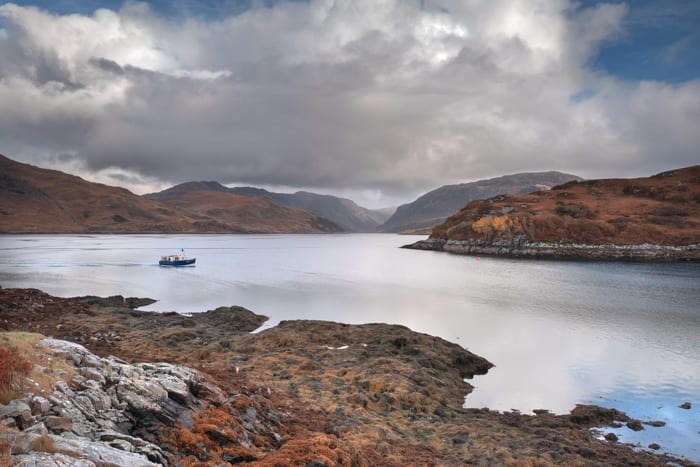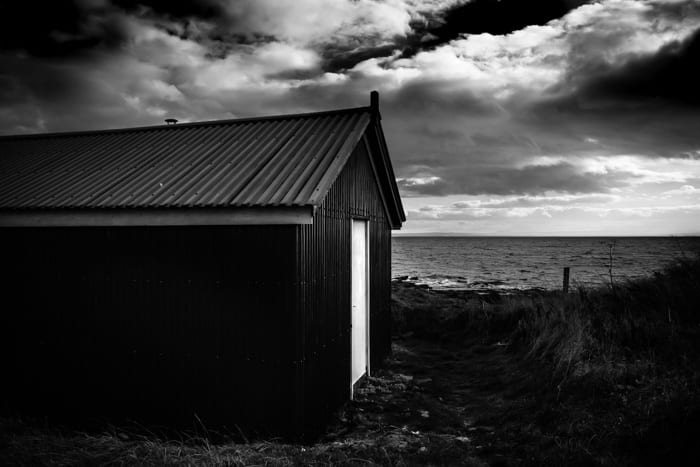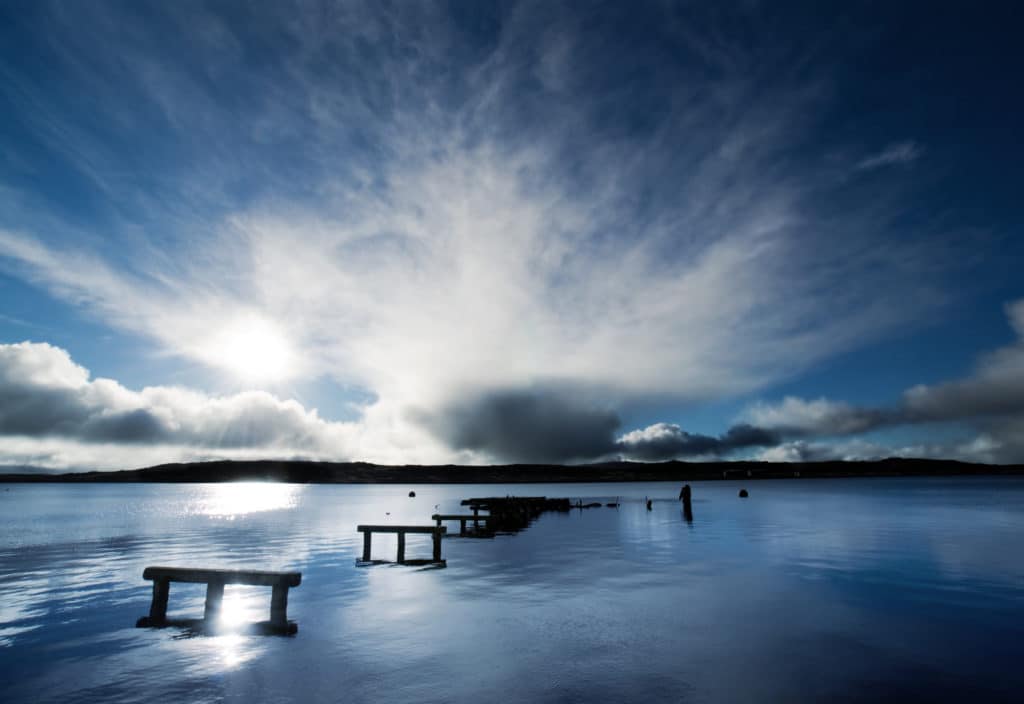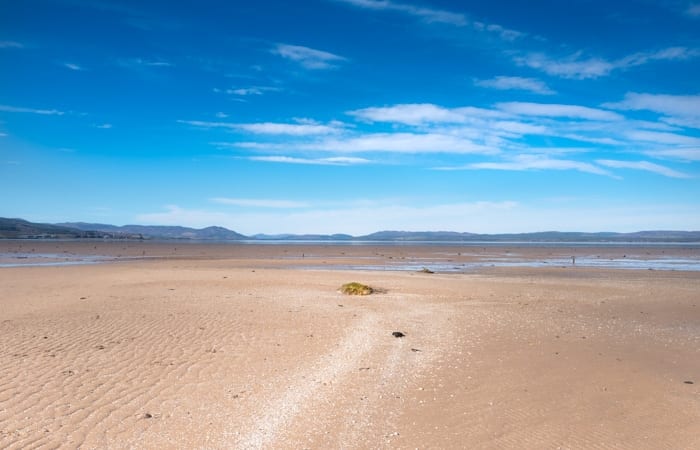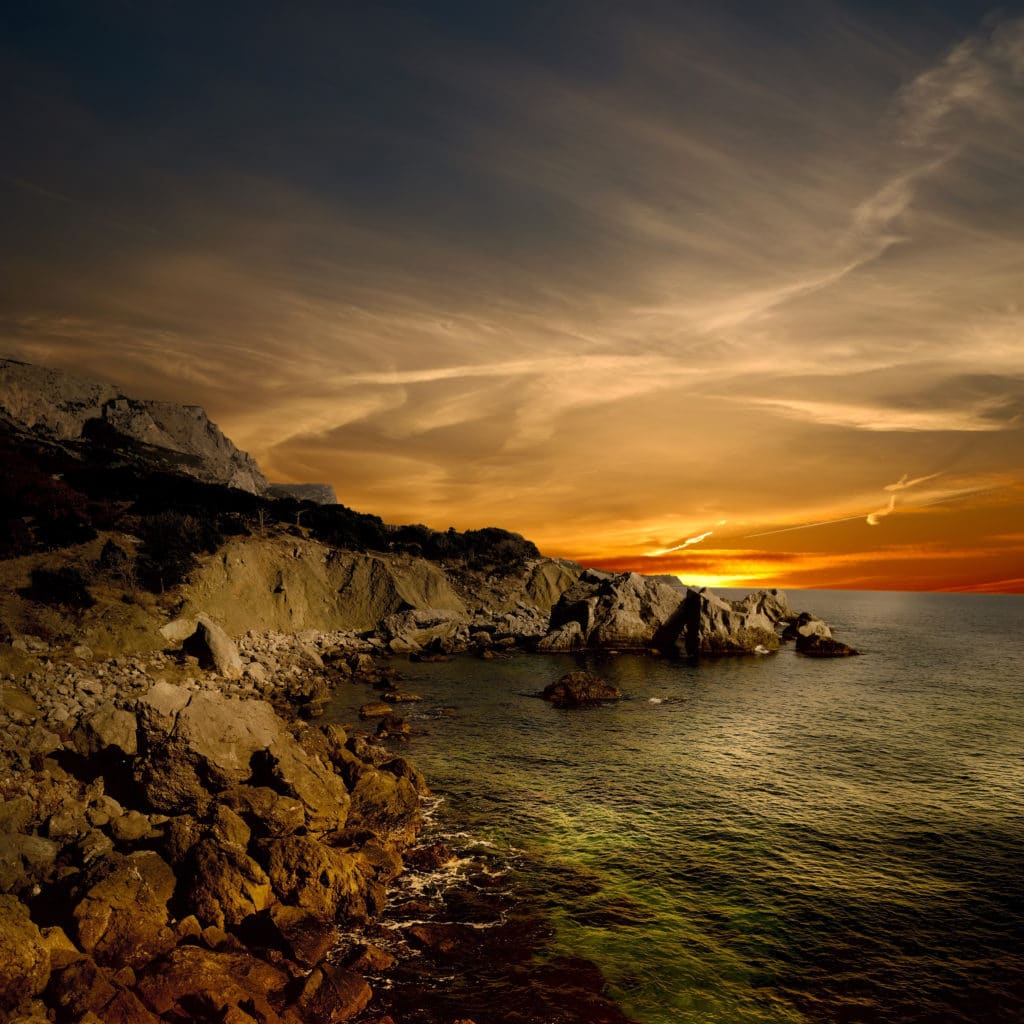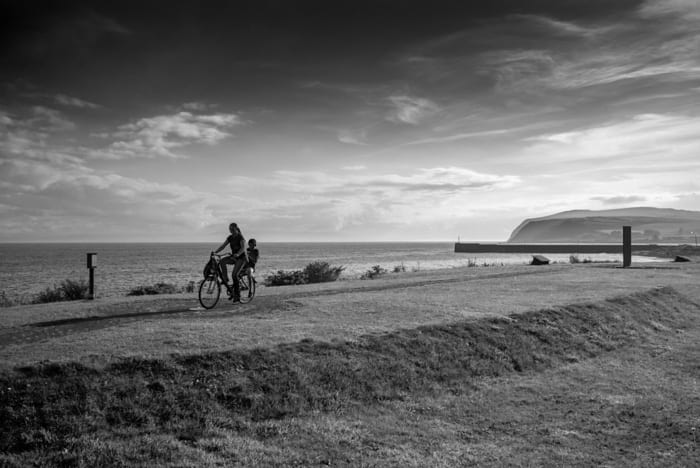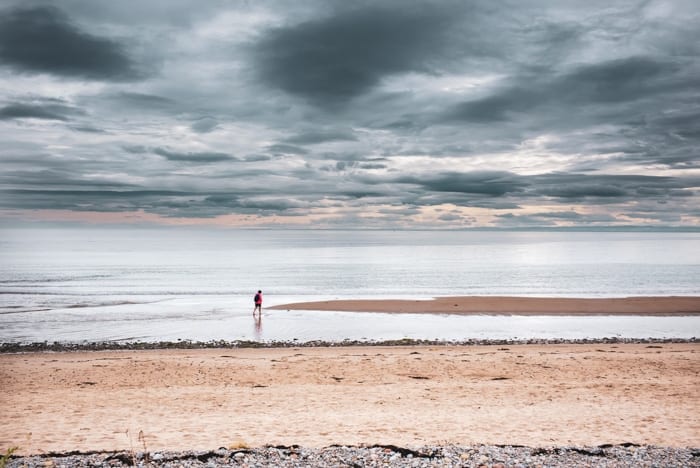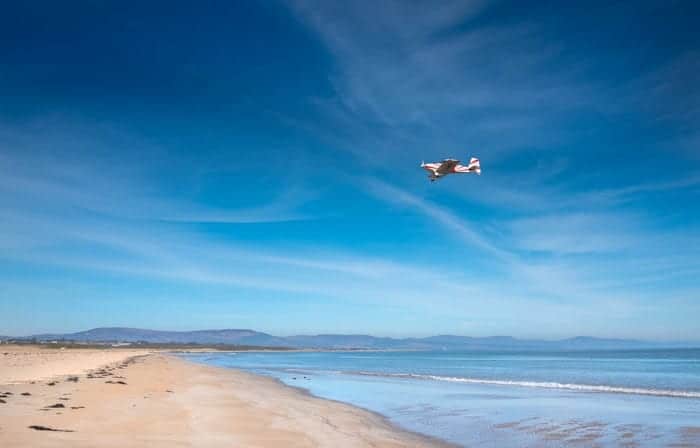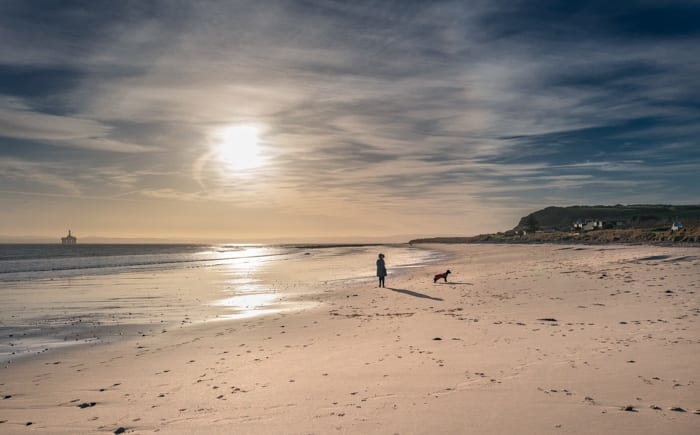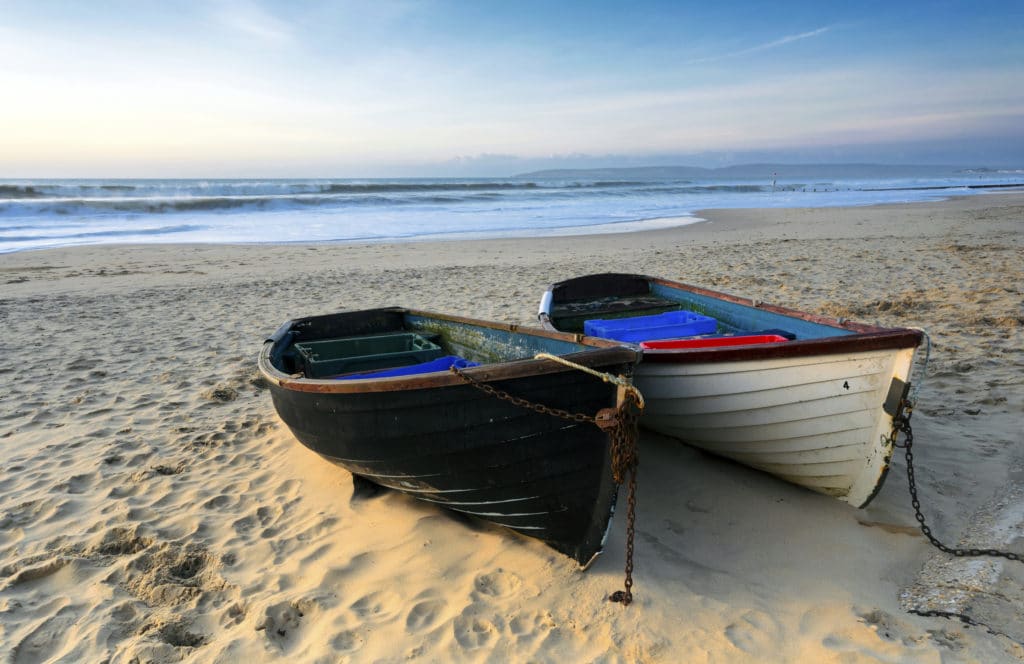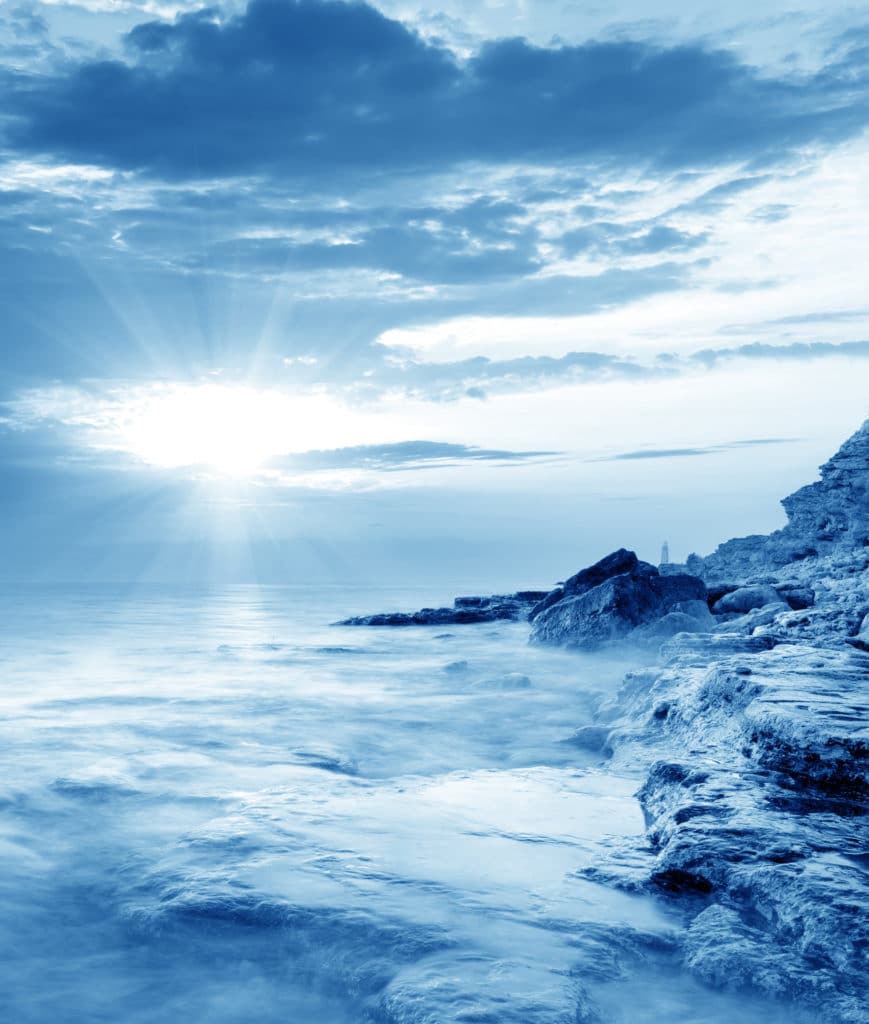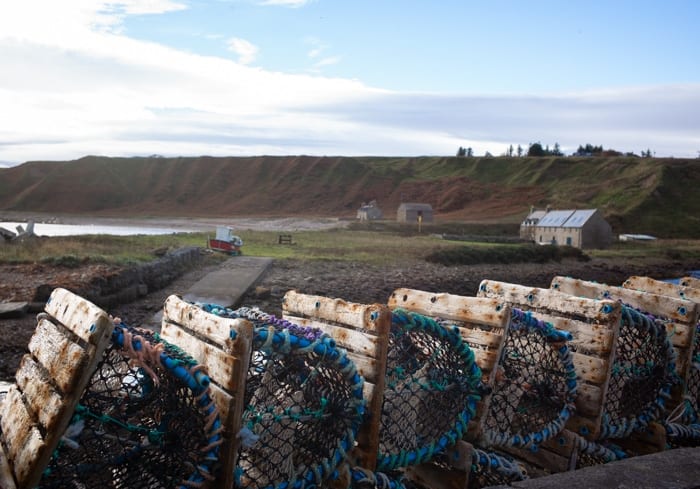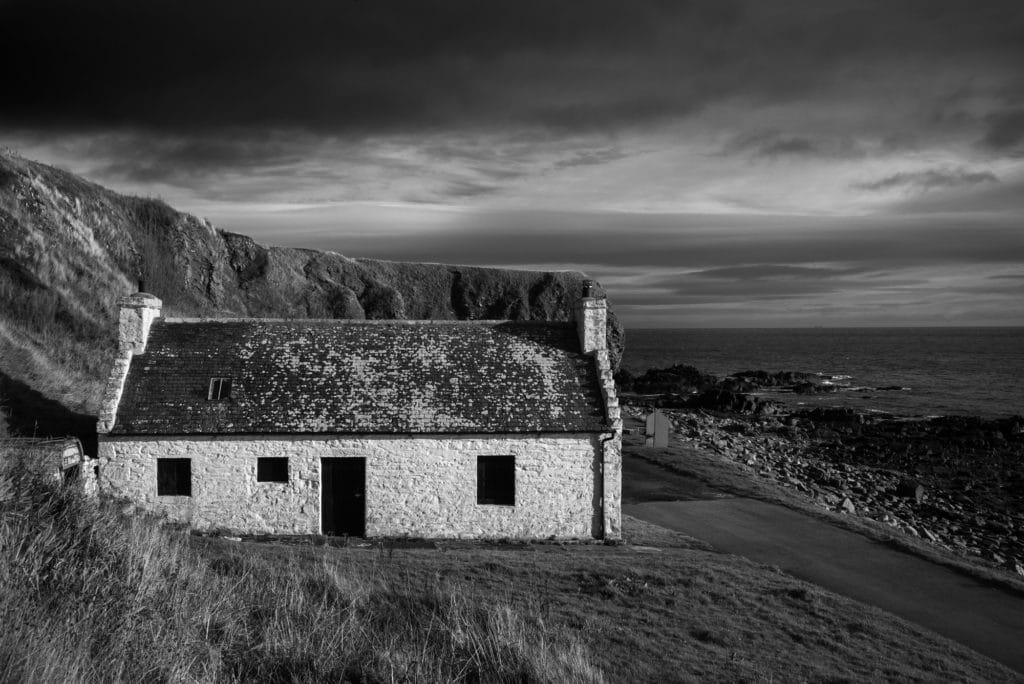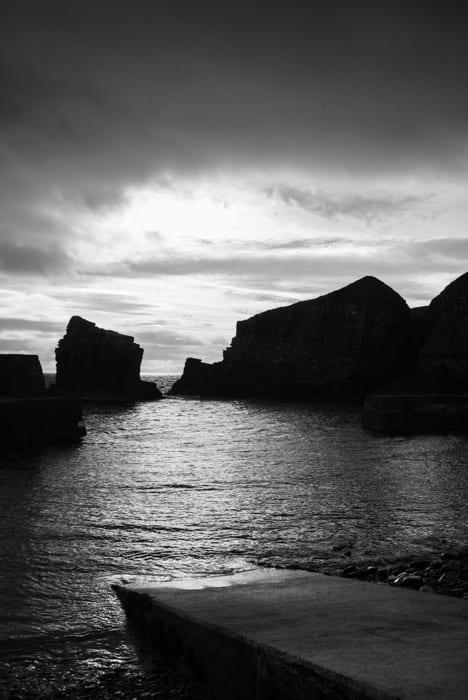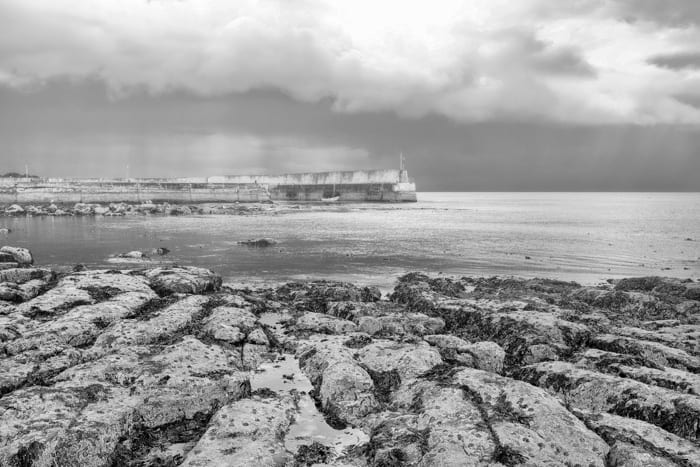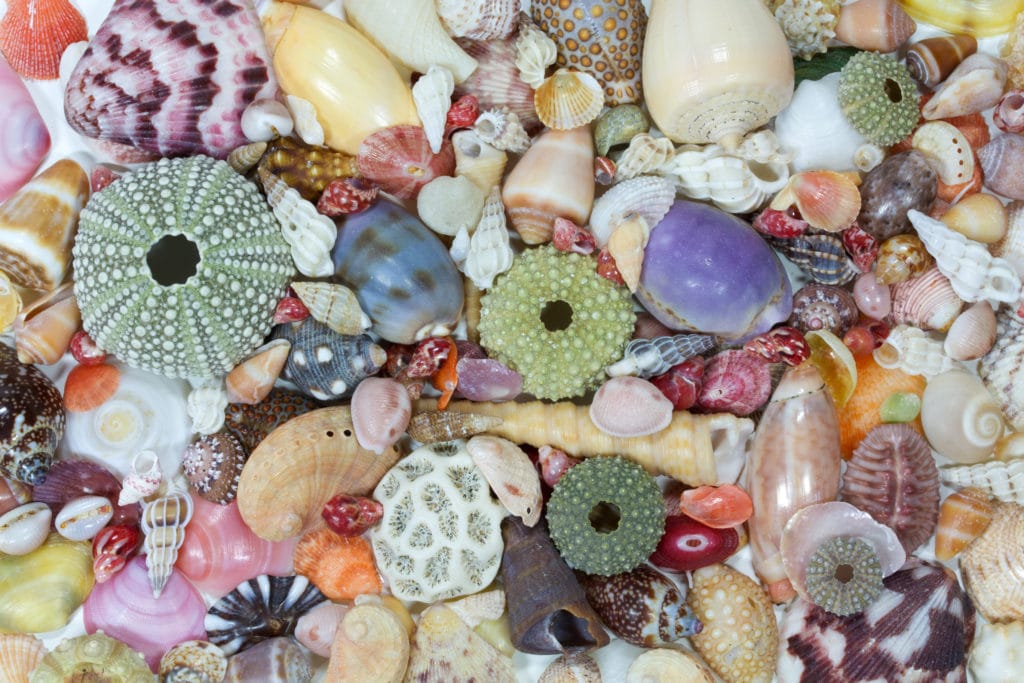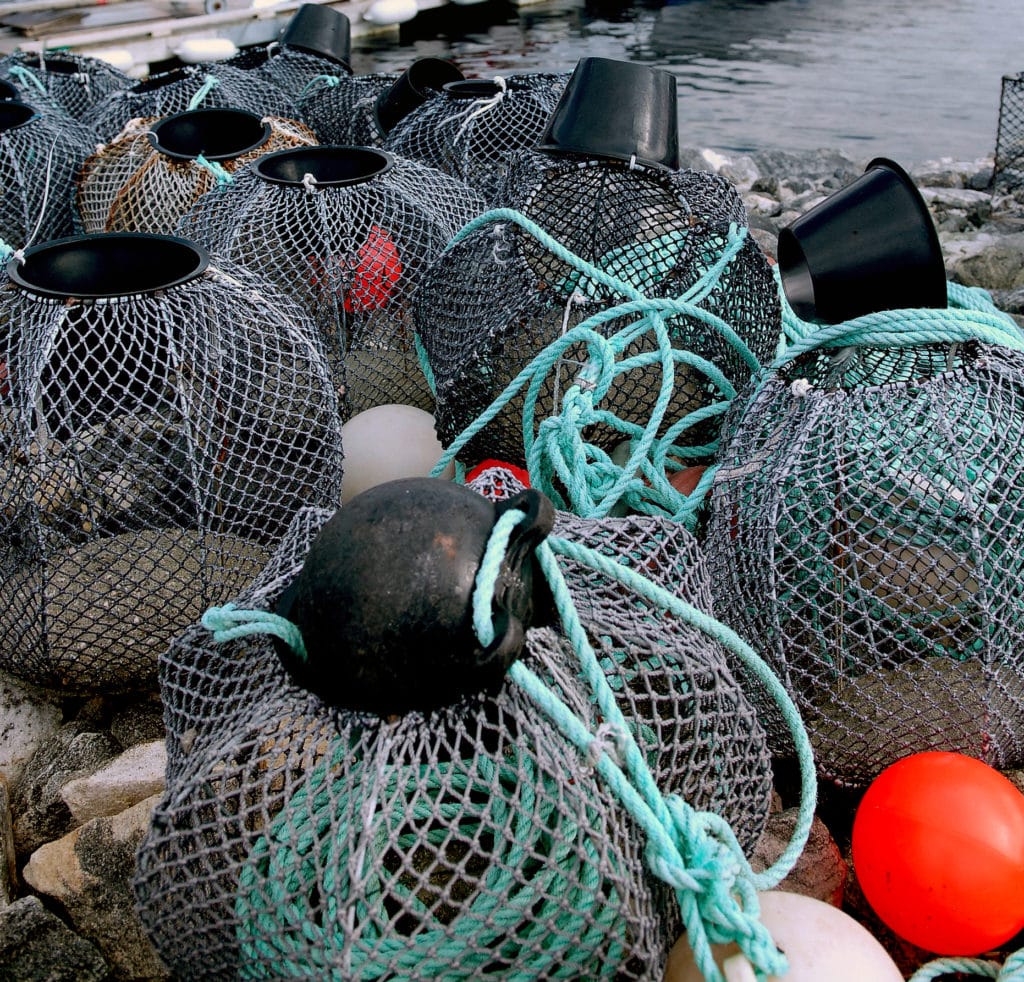Read this IOP® article on coastal landscape photography and start producing blissful beach shots.
Preparation
Coastal landscapes offer the photographer some of the most remarkable opportunities for capturing dramatic and dynamic pictures.
With all the elements of land, tide, sky and weather at work, the coast is a continually changing environment that requires both skill and planning to capture at its best.
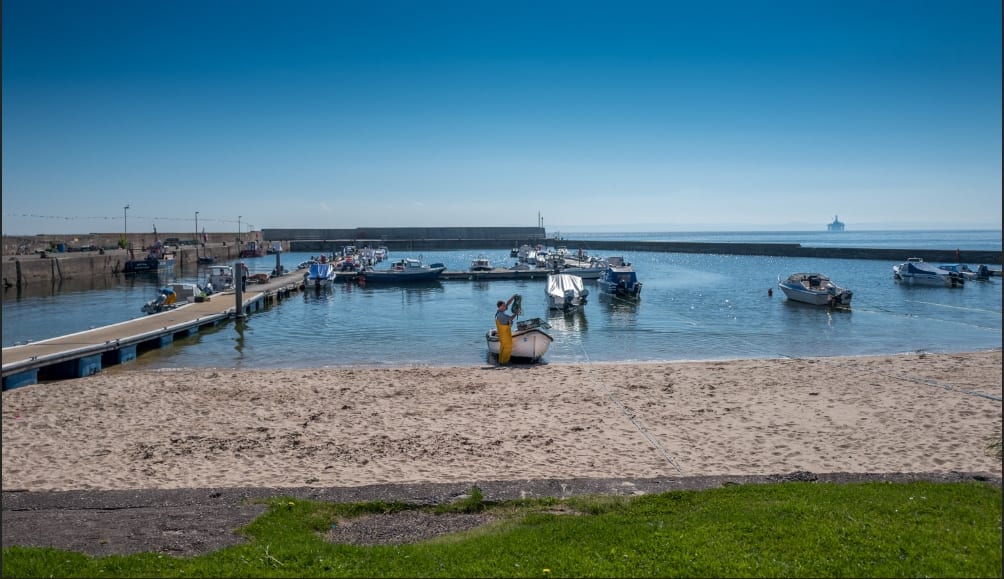
There are no more exciting places to take photographs than down on the coast.
With tranquil or wild seas, vast expanses of exposed sand and an infinite variety of rocks, cliffs, water and sand as subjects, you will be captivated and never at a loss for subject matter.
Even before you visualise the shot you want, there are many pre-checks you must make for the spot you intend to photograph.
While some images can be captured spontaneously; the coast has more variables than most landscapes so it is prudent to be armed with as much specific information as you can ascertain.
Coastlines can be dangerous as well as beautiful, and the sea demands a level of respect not always considered by land-locked town dwellers.
Get Familiar
Getting to know your location will help you to plan a successful day of coastal photography.
Some locations will completely transform in different light levels and tide levels.
Look around for interesting angles and focal points and especially note how they change at high and low tides. You could even use Google Earth to check out the terrain in advance.
Consider The Weather
The weather is the most significant factor in what type of shot you achieve, but that doesn’t always mean you want clear blue skies.
Scudding clouds, incoming storms and seas whipped by high winds can all provide dramatic scenes.
Keep an eye on the forecast and adapt your shoot accordingly.
Whether you go for high drama or tranquillity may be entirely in the hands of the elements so keep an open mind and work accordingly with the conditions you have.
Wind direction and strength can also impact on your photographs.
On the downside buffeting winds can make conditions difficult for longer exposures and sea spray potentially coating your equipment.
On the upside, high winds can whip up impressive foamy waves and swirling sands leading to images with a more significant impression of movement.
In windy conditions try to keep the amount of time your equipment is exposed to a minimum and wrap unused lenses in plastic bags to keep out sand and spray. A longer lens will also be invaluable in allowing you to stand back and protect your gear while still capturing the action.
Time And Tide
Some shots may only be accessible at low tides, while others may capture the added drama of crashing waves at high tides, so it is incredibly important to know what the tides are doing at your chosen location.
For safety reasons you need to know you will not be cut off on cliffs or rocks and for aesthetic reasons, you need to know that the image you want will be there when you are.
Local tide tables are readily available in all coastal towns or websites such as http://www.tidetimes.org.uk/ offer daily guides for the whole of the coast.
Stay Safe
The pursuit of the perfect shot can lead photographers into all sorts of precarious positions so try to stay aware of your surroundings.
Tides and waves present their dangers, but crumbling cliffs or falling rocks can equally be a threat. Equipment should be securely stowed, and camera neck or wrist straps are vital, especially if you have to scramble over rocks or move quickly to avoid an incoming wave.
Never change filters or lenses near to the water’s edge, move back to a safe place to do this and shield the camera and lenses from the wind and spray to avoid tiny particles of sand or salty water droplets getting inside your equipment.
Equipment
When preparing for a photo shoot for coastal landscapes, carrying the following equipment should cover most eventualities.
Lenses
An all-purpose wide-angle lens such as a 16-35mm is probably the most versatile lens for the majority of coastal landscape compositions. Additionally, a standard telephoto lens such as a 70-200mm will help take advantage of closer details, especially on dull days, rough waves without getting wet, abstracts and cliff-top vantage points.
Tripod
A tripod is crucial for long exposures in coastal landscapes and can also be enormously advantageous for capturing compositions over the sea. Using a tripod leaves both hands available to change lenses or filters without the worry of dropping anything.
The problem with using a tripod for coastal photography is that the majority of the surfaces you will be working on are pretty unstable. Sand, and especially sand at the water’s edge, will shift and move causing blurring on longer exposures. Try to dig the tripod a few inches into the sand to stabilise it, and double check before each shot that it hasn’t tilted and that horizons are still straight.
Rocks will present tricky angles, and you may have to use different leg lengths on rock surfaces to get a stable straight composition. Always rinse off the tripod with clean tap water after the shoot to prevent saltwater corrosion. Most tripods are made of aluminium and shouldn’t suffer too much from rust, but washing and drying will help extend its lifetime.
Filters
A set of neutral density filters (ND2, ND4, ND8) is essential to achieve long exposures. Graduated neutral density filters can add a dynamic intensity to skies depending on the effect you hope to achieve. A polarising filter is handy to reduce reflections on water and boost colour saturation in bright sunlight.
Camera Accessories
A remote cable will help to shoot long exposures without disturbing the camera body and causing blur.
A lens hood will be of assistance in preventing too much sea spray from reaching the camera lens and is particularly vital if you are shooting close to crashing waves or on windy days when there is a lot of sea spray in the air.
Cleaning /Protection
Keep a couple of soft cleaning cloths in your camera bag to carefully wipe away any spray or water splashes on a lens. Try to regularly check the lens between shots to prevent water droplets ruining a shot.
Plastic bags are particularly useful when shooting coastal landscapes. Keep spare lenses wrapped in plastic (sealable sandwich bags are ideal) and make sure you return each lens to a bag when you have used it. A few layers of cling film can also be used for this purpose.
Top Tip
Remember to clean all your equipment thoroughly on your return home; salt water is pervasive and will destroy your camera equipment.
On The Beach
Vast expanses of sand coupled with uninterrupted horizons offer some superb opportunities as beaches have natural beauty, colour and remarkable light variations.
The beach also, however, presents a mixture of challenges that include potential camera damage from spray or sand, privacy problems and sometimes just making a huge open space interesting.
One common difficulty with beach photographs is that although there is the potential to capture a stunning scene if you have no particular point of interest it can result in a relatively barren and boring picture. When framing a shot, look for a focal point that will draw the eye and provide a logical focus for the whole image.
A pattern in the sand, outcrop of rock, footprints, or beach safety flag are good examples of a focal point in a wide open landscape.
Capturing waves requires high-speed photography if you want to improve a composition with the wave spray you need to activate the shutter at precisely the right time. The only way to do this is to watch the waves and learn to calculate the intervals between them. Waves have patterns and cycles, learn them to capture the ideal moment.
The immensity of the ocean invites most photographers to capture a magnificent seascape using a wide or even ultra-wide lens. Nevertheless, a telephoto lens can be equally useful to create more intimate compositions from coastal scenes, especially if you have pools, pebbles or rocks.
Try altered focal lengths to hunt for a composition you hadn’t immediately considered, use different exposures to create an abstract image or a whole new focal point.
Sunrise and sunset usually present the finest opportunities for capturing great shots at the beach. There will usually be fewer people around to interrupt the panorama at these times of the day, and the low angle of the sun offers more appealing effects on shadows and colours, especially at sunset when the colours become warmer.
UV filters are helpful for beach photography as they act as a shield for your lens against sand and spray and they also filter out a certain range of ultraviolet light.
This can reduce any atmospheric haze which can add a bluish tinge to a photograph.
Another useful piece of equipment for the beach is a polarising filter. This filter reduces reflection and enhances contrast, giving more intense blue skies and reduced reflections on water and sea. It will also boost colour saturation, as the glare given off by light reflection often washes out the whole subject.
Under no circumstances set your mind on just one shutter speed. Extremely long exposures can create a foamy or dreamy appearance of the water, while very short shutter speeds will freeze the action of waves and splashes capturing each drop in the frame.
The most useful shutter speeds, however, usually are somewhere in the middle. Try out shutter speeds between 1/50 and few seconds to achieve both the abstract image of a longer shutter speed compared to the dynamic image of a wave in action. Shutter speeds such as 1/8, 1/15 and 1/30 are capable of producing stunning results and too often ignored.
On The Cliffs
Clifftop photography offers an exhilarating alternative to capturing images at sea level. From this vantage point the whole horizon opens up, and the dramatic plunge of the cliff face into the sea provides contrasts and focus.
When shooting along the cliff top, it is advantageous to have both telephoto and wide-angle lenses in your equipment. A wide-angle lens is especially handy for shooting down a vertical cliff face to capture the waves crashing on the rocks beneath while still including a remote headland and the horizon. On the other hand, a telephoto lens will compress perspective to bring the distant coastline into the frame.
The seasons may play an essential part in creating stunning cliff top photographs as the amount of flora and fauna on the cliff itself will change throughout the year.
Late spring or early summer usually offer the most colourful displays of, and these can be used as a contrast to the rocks and sea below. A composition made at a low angle and with a small aperture will allow you to capture the colourful flowers as the foreground focal point with the vast ocean and horizon falling behind.
In winter the cliff will be barer, but this can serve to highlight the severe conditions of winter storms and brutal seas. To properly catch the excitement of the sea crashing against cliff and rocks you need a shutter speed of something like 1/125 to freeze the action.
In contrast, a more abstract image can be created by slowing down the shutter for a longer exposure of 10 seconds or more to create swirling patterns and foam trails in the water. Longer exposures will usually require the use of neutral density filters and small apertures.
Coastal Villages
Coastal photography is all about contrasts and certainly does not have to be limited to wild and barren landscapes. Villages along the coast were mostly founded around working from the sea and usually feature harbours, ports and quays. Strong shapes and picturesque vistas abound with pretty whitewashed cottages, brightly coloured boats and interesting reflections from water to land.
Although the commercial fishing industry is limited to only a few places, most coastal villages will have small fishing boats and private yachts anchored in a harbour of pulled up on a slipway. Boats are often brightly painted and make an ideal foreground focus in a wide-angled composition. If they are anchored in the water, the reflections from a ship on the surface of the water create an interesting image either as part of the landscape or as a standalone abstract of the scene.
Harbours and quaysides are often a great source of smaller focal points such as coiled ropes, lobster pots and colourful buoys. To give emphasis to these foreground items, with a wide angle lens move in low and close and fill the base of the composition with the details and object colours. A short focal depth will blur the background and further focus on the object or give the subject more depth of field with a smaller aperture to show it in the context of its surroundings.
For the most part, you will want to photograph more than just a postcard scene of the village, so it is unlikely you will wish to have people included in the scene.
Planning to arrive early or late in the day will avoid most of the crowds and have the added benefit of a lower angle of light to emphasise shadows and contrast. High midday sun can flatten an otherwise interesting scene, and brightness may affect the ability to shoot longer exposures with using heavy neutral density filters.
On The Rocks
A rocky scene can be striking, with sharp angles and deep shadows throwing light and contrast into stark relief. Far from the tranquillity of soft sands and rolling waves, rocks and cliffs present a wholly different approach to capturing their beauty and grandeur.
A clear composition is vital to successful rocky scenes as images can easily appear cluttered and messy. Visualising a clear path the eye can follow through the composition or choosing a single outstanding rock amongst smaller, less defined pebbles can help to create an image that is distinct and clear.
Physical access to rocky shorelines can be tricky and especially if you are shooting close to the water’s edge, a close eye should be kept on the tides to make sure you don’t get cut off. Setting up a tripod on such an uneven surface presents its problems, but you may be able to use some of the other rocks in the location to help steady both yourself and your equipment.
Tides can play quite a large part in rocky beach scenes as receding waves can leave interesting rock pools, but low tides may reveal seaweeds and barnacles that could further clutter a composition. Higher tides offer a better combination of water and rocks which can calm down an image and offer you a variety of options for shutter speeds from fast speeds for capturing and freezing water splashes through to long exposures to give the water a bleary, ethereal feel.
Aim for rocks where cascading waves leave white water running between the rocks. The watery channels operate as a line for the eye and add a light element to balance the darker rocks in the other areas of the image.
If you want less contrast shoot in more overcast daylight, but be aware that this can drastically reduce the dynamics of the image.
Sunshine casts shadows that make the patterns of rocks appear to be almost three dimensional. If the shadows are too deep using a flash fill will reduce the shadows and even the contrast. Using a flash control set the flash compensation to -1 in cloudy conditions and -2 in brighter sunshine. The outcome will be a lessening in the density of shaded areas but still sufficient to keep a three-dimensional effect.
The warmth of evening sun can completely change and soften rocky coastlines, bathing the subject in golden light with intense shadows. Shooting the sea moving around rocks using longer exposures in lessening light can produce calmer images with swirling ethereal mist-like water contrasting with the stark shapes of the solid rocks.
Abstracts
Rocks, pebbles and flotsam are abundant on the coast and can make excellent subjects to picture close to. Distilling the focal point down to its core usually results in a focus on colours or shapes and sometimes both.
Even though a macro lens is more ideally appropriate for abstract photography, any lens can capture an abstract as long as the image offers a view that provides colour or texture. A zoom lens can focus in on pebbles or rock strata to pick out symmetry and pattern.
Another method for abstracting an image is to intentionally move the camera or slow down the shutter to capture a vague impression of a moving subject. Seaweed swaying in a rock pool will produce a ghostly image or a sea bird in flight will streak light and shade against a stark background.
Long exposures also produce almost abstract and vaporous seascapes. Use a short telephoto lens to isolate an object such as a rock against a background consisting of just the sea and use a long exposure to blur the movement of the waves. Extreme neutral density filters allow you to lengthen the exposure time to such a degree that the definition of the sea disappears to produce a minimalist image.
The beauty of photographing coastal landscapes – or perhaps the difficulty, depending on your viewpoint – is that the weather is constantly changing, which means plans for particular images may have to be abandoned and a whole new idea formed on the spot. Dull weather can offer the opportunity of looking in closer detail at the landscape and focussing on the multiplicity of forms and layers that the coast has to offer.
If you haven’t joined an IOP® Online Photography course yet:
Read our FAQs here.
Perhaps you are thinking about what qualification is best. Read this blog on whether you need a degree to be a photographer.
If you need advice on which camera to buy, you can get in touch with us or read this article on the best DSLRs for beginners.
If you want to take control of your earnings by starting a career in photography, check out this article on the best places to make money from photography.

